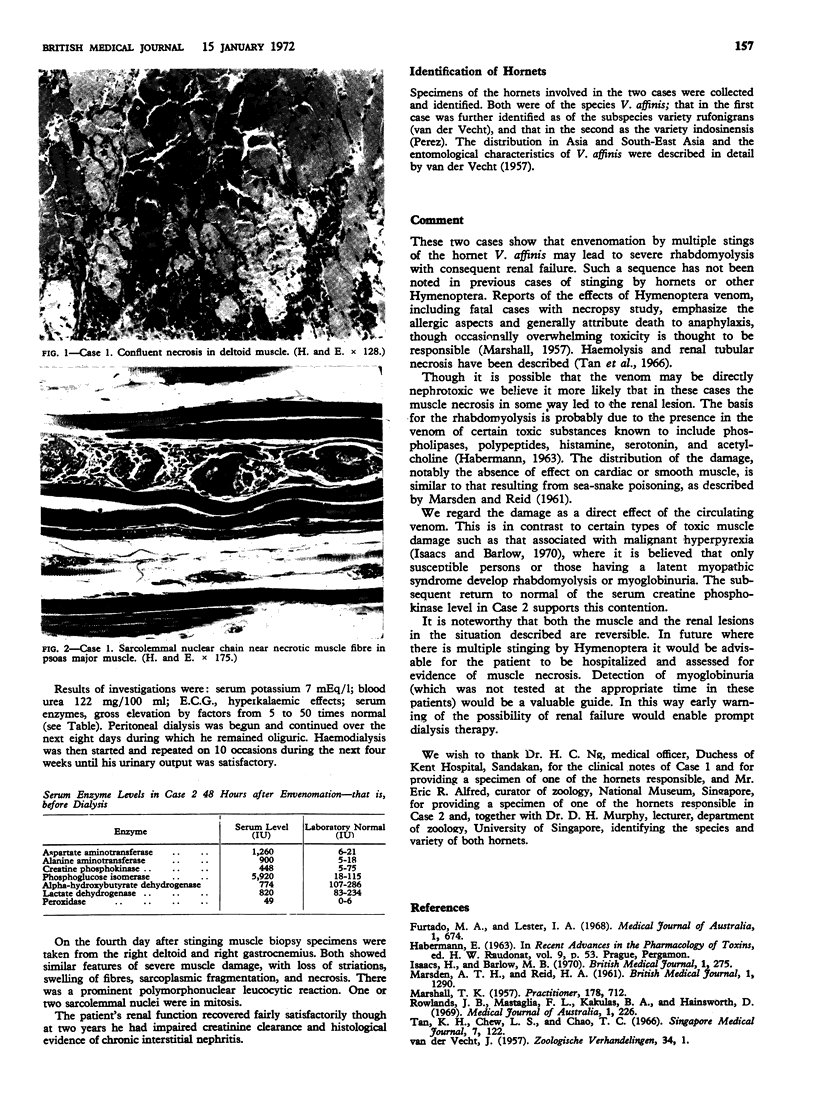Full text
PDF

Images in this article
Selected References
These references are in PubMed. This may not be the complete list of references from this article.
- Furtado M. A., Lester I. A. Myoglobinuria following snakebite. Med J Aust. 1968 Apr 20;1(16):674–676. doi: 10.5694/j.1326-5377.1968.tb28793.x. [DOI] [PubMed] [Google Scholar]
- Isaacs H., Barlow M. B. Malignant hyperpyrexia during anaesthesia: possible association with subclinical myopathy. Br Med J. 1970 Jan 31;1(5691):275–277. doi: 10.1136/bmj.1.5691.275. [DOI] [PMC free article] [PubMed] [Google Scholar]
- MARSDEN A. T., REID H. A. Pathology of sea-snake poisoning. Br Med J. 1961 May 6;1(5235):1290–1293. doi: 10.1136/bmj.1.5235.1290. [DOI] [PMC free article] [PubMed] [Google Scholar]
- MARSHALL T. K. Wasp and bee stings. Practitioner. 1957 Jun;178(1068):712–722. [PubMed] [Google Scholar]
- Rowlands J. B., Mastaglia F. L., Kakulas B. A., Hainsworth D. Clinical and pathological aspects of a fatal case of mulga (Pseudechis australis) snakebite. Med J Aust. 1969 Feb 1;1(5):226–230. [PubMed] [Google Scholar]




